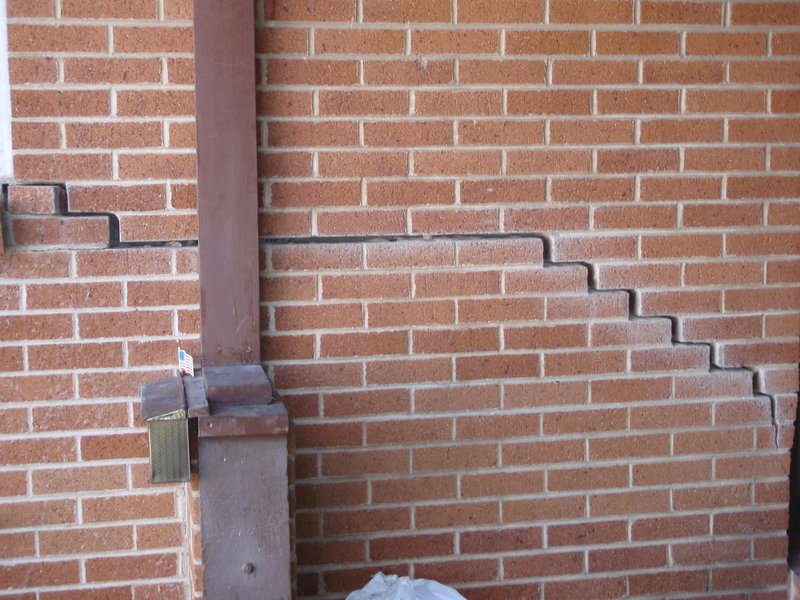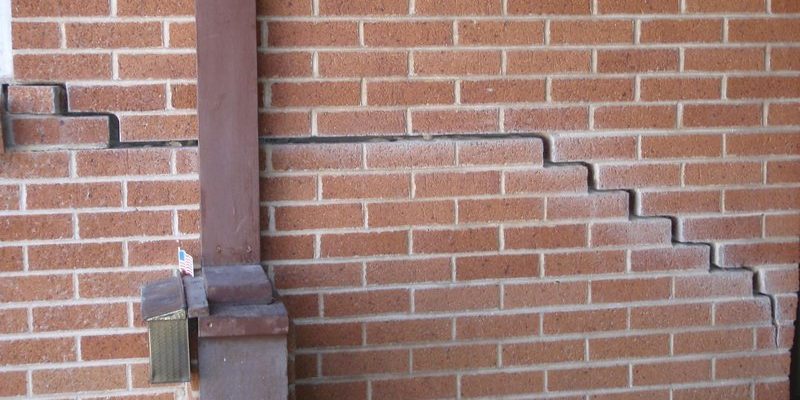
Honestly, door hardware isn’t usually the first thing people suspect when their home shifts. Most folks might blame a bad lock, a worn-out hinge, or even a “cheap” doorknob. But if your house is settling—even just a bit—it can sabotage your Schlage deadbolt, your Kwikset lever, or even a classic Emtek crystal knob. Here’s the thing: no matter the brand, they’re all at risk when your foundation moves. Don’t worry, though—most issues can be diagnosed and fixed with a little troubleshooting.
Let’s walk through why foundation settling messes with door hardware, what problems to look out for, and (most important) how you can troubleshoot and solve these issues without calling in a contractor for every creak or shift.
Why Foundation Settling Affects Door Hardware
You might be wondering why something happening under your feet would mess with a door on the other side of the house. The short answer: when your foundation shifts, so does everything that’s attached to it. That means every wall, frame, and door isn’t quite sitting where it started out.
Here’s how it goes: your house’s frame is a rigid structure, but the land beneath it isn’t always so reliable. Over time, things like soil moisture, seasonal changes, or even nearby construction can make the foundation move by just a fraction of an inch. It doesn’t sound like much, but for door hardware—precision matters. That tiny shift can pull a frame out of square, causing the latch or deadbolt to miss its strike plate, or making the door rub annoyingly at the top or bottom.
Even a well-installed set of Baldwin hinges or a tight Yale lockset can turn uncooperative if the house is settling. All the code and engineering in the world won’t stop mechanical parts from resisting a crooked frame. If your door suddenly stops locking or it feels off when you close it, there’s a good chance your foundation has quietly shifted things out of sync.
Common Door Hardware Issues Caused by Settling
It’s not always obvious that foundation settling is behind your door woes. But some problems just love to pop up:
- Sticking doors: The door gets hard to open or shut. Sometimes you need a solid hip-check just to get in or out.
- Latches that won’t catch: The lock or latch doesn’t align with the strike plate, so you can’t get the door to stay closed or lock properly.
- Gaps around the door: Suddenly there’s light peeking through where there shouldn’t be, or you can feel a draft.
- Doors that swing open (or shut) on their own: The frame is out of plumb, so gravity takes over.
Take a Kwikset handle, for example. You might find the latch tongue won’t quite reach the plate, or your Schlage keypad lock suddenly won’t retract the bolt smoothly. Even a simple closet knob can start spinning, feeling loose or unreliable. Foundation settling can affect *any* brand and every style—no one’s immune.
But here’s the thing: most of these issues have a common feel. If you’re struggling with more than one door in your house, or if a door that always worked fine is suddenly stubborn, that’s a sign to look below the surface—literally.
How to Spot Foundation-Related Door Problems
Let me explain what to look for. Not every sticky door is the victim of a shifting foundation; sometimes it’s just humidity or a loose screw. But if you notice a pattern, it’s time to investigate:
- Cracks around door frames: Little hairline cracks or larger splits around the trim can mean movement.
- Changes in floor level: Can you feel a slope when you walk through the doorway? Foundations that settle unevenly can tilt the floor beneath the door, throwing everything off.
- Multiple doors out of sync: If several doors in different parts of your home are suddenly not closing right, settling is a likely suspect.
- Mismatched latch and strike plate: Check where the latch hits the strike. Is it way above or below the opening? The frame has probably shifted.
Sometimes, grabbing a small bubble level will tell you a lot. Place it across the top of the door or along the hinge side. If the bubble’s not centered, your frame has moved—and your door hardware is struggling to keep up.
Don’t just blame the lock or knob. Foundation settling usually leaves a trail if you look closely.
Quick Fixes for Door Hardware Alignment Issues
Before you call in a pro, there are a few things you can try for minor alignment issues. If the movement is small and recent, a simple tweak might get things working again.
- Adjust the strike plate: Use a screwdriver to loosen the screws, shift the plate slightly up or down, then retighten. Sometimes, moving it an eighth of an inch solves the latch problem.
- File the strike or latch: If the catch is just barely missing, use a metal file to widen the opening in the strike plate. It’s a quick hack—but only for minor gaps.
- Shim the hinges: For doors rubbing the jamb, adding thin cardboard behind one or two hinge leaves can re-square the door. Remove a screw, slide in a shim, and put the screw back.
- Tighten loose hardware: Sometimes, all it takes is a firm twist of the screwdriver on your lock, knob, or hinge screws to pull things back into alignment.
Honestly, these are band-aids, not cures. If your house keeps shifting, the problems will come back, but these steps can buy you time and make daily life less annoying.
When to Call a Professional
Here’s the thing: not everything can (or should) be DIY’d when it comes to doors and foundations. If you’re seeing major cracks, doors that simply won’t budge, or multiple doors all going haywire, it’s time to bring in the experts.
A professional can:
- Inspect your foundation and find out if there’s structural movement or damage.
- Check for water issues, soil problems, or other causes behind the settling.
- Suggest proper repairs—sometimes this means stabilizing the foundation, not just shimming a hinge.
Think of it this way: fixing a crooked frame without stopping the underlying foundation movement is like mopping up a leak but never patching the hole. Pros can tell if you need real repairs or if your home just needs a tweak. And if you have high-end hardware—like a multi-point lock or an electronic keypad—getting things synced and reset often needs specialized know-how.
If you ever feel like your doors are inching toward “unusable” or if security is on the line, don’t wait. Foundation issues can get worse—and pricier—the longer you ignore them.
How to Prevent Foundation Settling (and Protect Your Doors)
You can’t guarantee your house will never settle, but you *can* stack the odds in your favor:
- Keep gutters clean: Divert water away from your foundation. Bad drainage is one of the most common causes of settling.
- Manage soil moisture: Consistent moisture around your home helps keep the soil stable. Avoid letting one side get soaked while the other gets parched.
- Monitor new cracks: Keep an eye out for changes, especially after heavy rain or drought.
- Service your doors and hardware: Check for loose screws, lube hinges, and test locks regularly—especially if you live somewhere with big seasonal changes.
Remember, even small prevention efforts can keep troubleshooting simple—and help your expensive hardware last longer.
Comparing Fixes: Temporary Tweaks vs. Long-Term Solutions
It’s tempting to just “make it work” when a door won’t latch, especially if you’re handy with a drill or a bit of code for your smart lock. But let’s compare your options:
| Temporary Fixes | Long-Term Solutions |
|
|
Temporary tweaks are fine for small, early stages of settling—but if you’re constantly resetting, adjusting, or replacing hardware, it’s time for a bigger fix. Foundation work may sound expensive, but it saves you money (and headaches) in the long run.
Choosing the Right Door Hardware for Settling-Prone Homes
Some homes just settle more than others—that’s a fact. If you’re in an older house, or on unstable ground, it pays to choose the right gear:
- Look for adjustable strike plates: Some brands offer plates you can shift up, down, or side-to-side without new holes.
- Pick robust brands: Schlage, Kwikset, and Emtek make hardware that can handle a bit of rough handling and reinstallation.
- Consider smart locks with manual overrides: That way you don’t get locked out if movement throws the sync off.
- Use deep-set screws: Longer screws in hinges and strike plates grab more of the frame, keeping things in place if the wood moves a little.
And don’t forget—whenever you install new hardware, check that the frame is square and plumb first. Otherwise, even the fanciest lock will struggle.
Wrapping It Up: Don’t Let Settling Get the Best of Your Doors
Dealing with door hardware issues thanks to foundation settling can feel like a game of whack-a-mole. One day it’s a sticky door; the next, your keypad needs a reset, or the deadbolt won’t line up. But knowing what’s really behind these problems—and how to troubleshoot them—makes a huge difference. Start small with adjustments, keep an eye on your foundation, and call in a pro if things get beyond a DIY fix. Your doors (and your sanity) will thank you.
